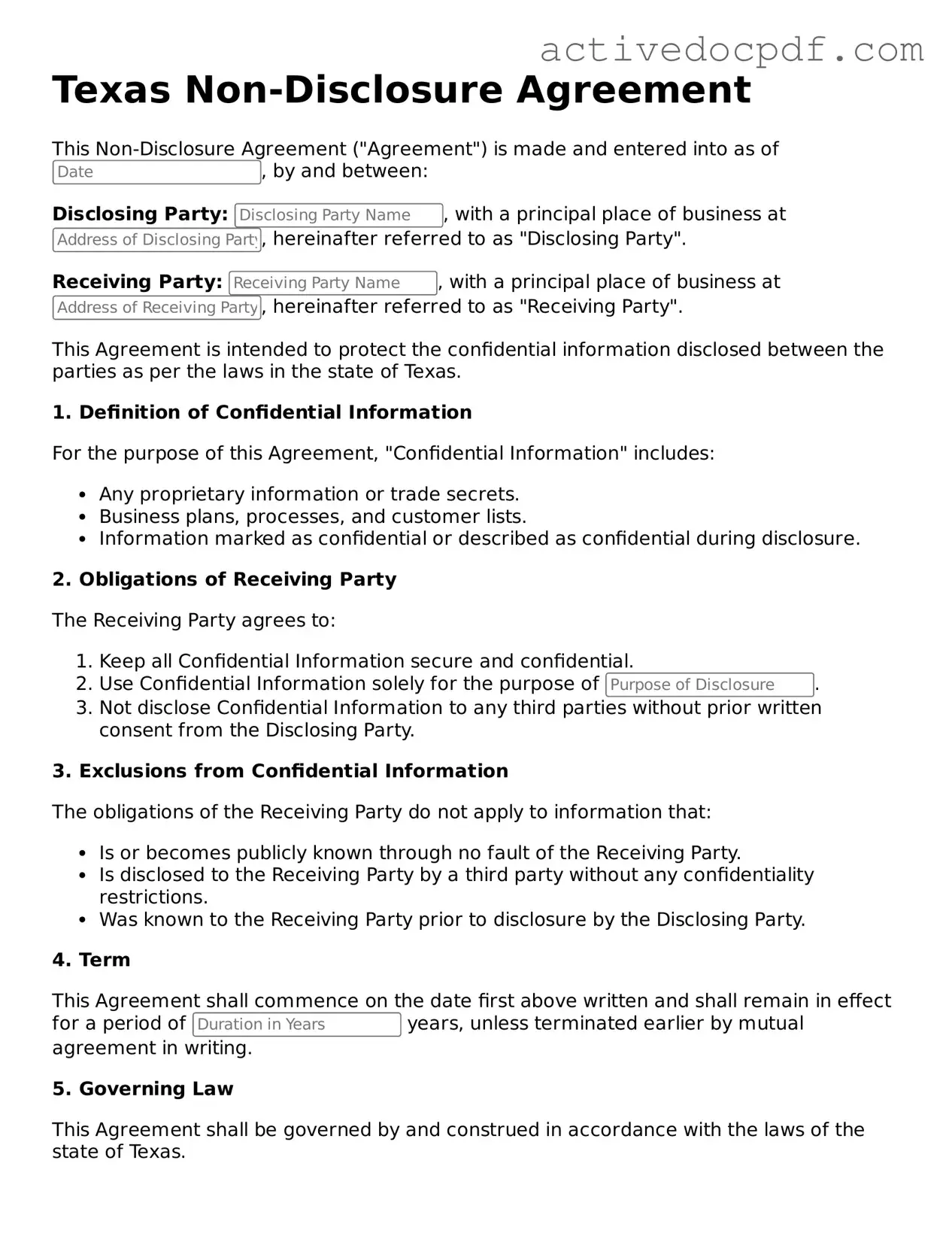Legal Non-disclosure Agreement Document for Texas State
A Texas Non-disclosure Agreement (NDA) is a legal document designed to protect sensitive information shared between parties. This form ensures that confidential details remain private and outlines the obligations of those involved. By establishing clear terms, it fosters trust and encourages open communication in business relationships.
Edit Form Online
